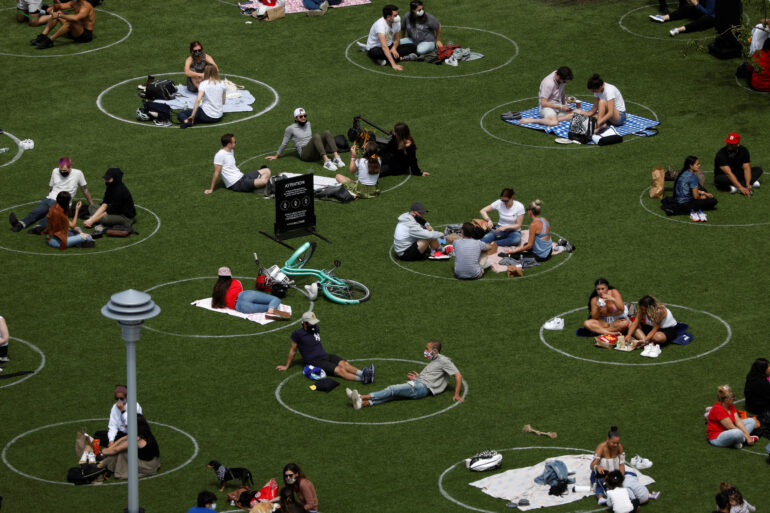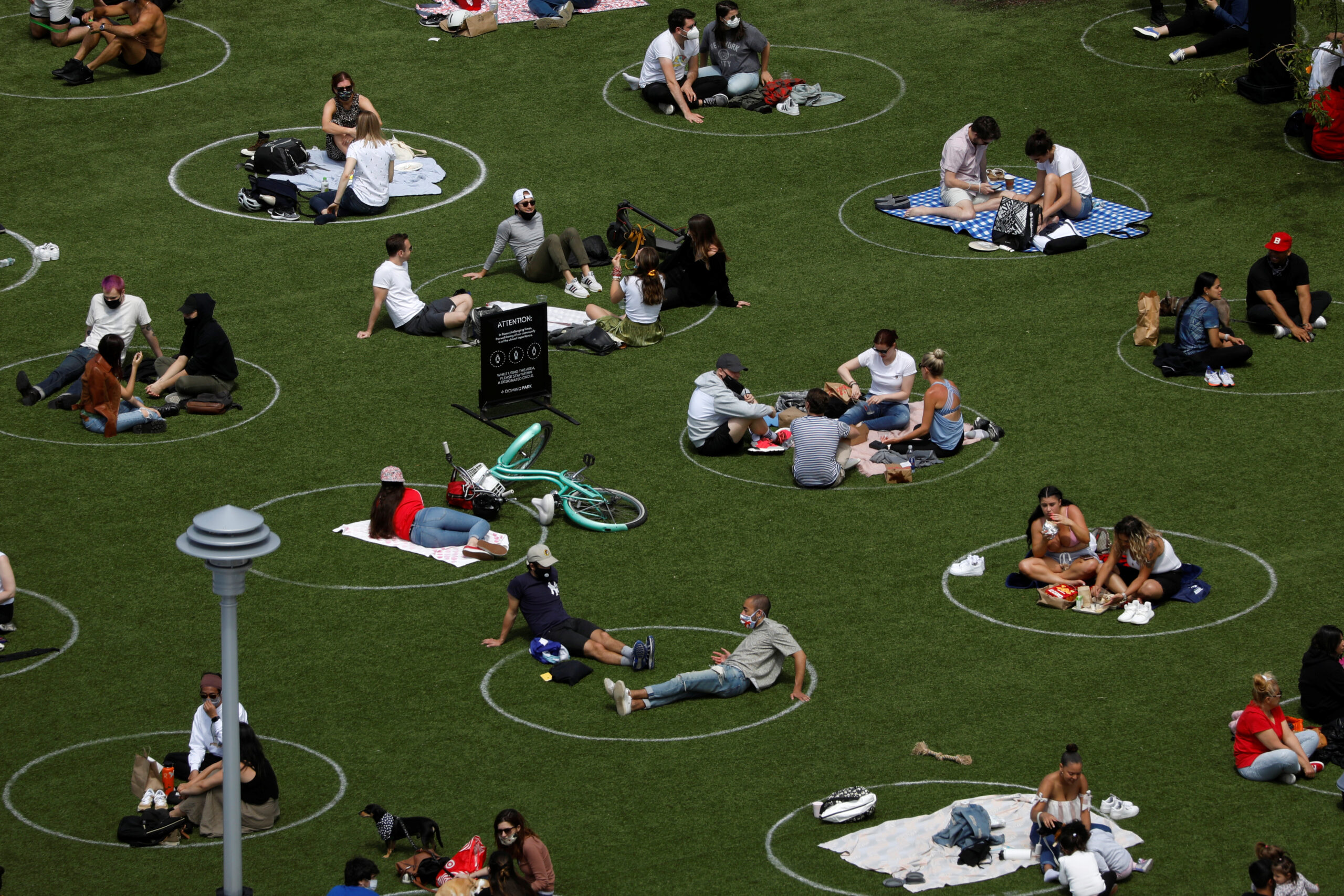
Lucy Lau
Introducing physical distancing circles to parks will support the health of Toronto residents but more practical recommendations are needed if the city hopes to slow the spread of COVID-19, said one local expert.
Dr. Dominik Mertz, an associate professor and infectious diseases specialist at McMaster University’s Department of Medicine, said a recently announced pilot program by the City of Toronto, which will see white circles painted on the grass at Trinity Bellwoods Park to encourage physical distancing, is a step in the right direction and a measure that “probably should have been completed previously.”
“If you stay within your circle with the same group of people that you came in [to the park] with, you reduce your risk because you only have contact with X number of people on that day,” he said.
However, the initiative needs to be rolled out alongside “pragmatic” messaging that shares what people can do to avoid contracting and transmitting the novel coronavirus if they do choose to break physical distancing rules and other restrictions, Mertz said.
“I think we are at the point where, yes, policy is great, but we also need to look at the reality and give people the right information: what they can do to minimize the risk if they choose to take a risk,” he said.
Mertz said there will continue to be people who ignore the advice of public health officials, which, in Ontario, includes staying at least two metres from others and restricting gatherings to less than five people unless the individuals live in the same household.
For this reason, government leaders and public health officials need to share information about how people can make smart decisions even if they decide to overstep boundaries, he said.
Mertz said multiple people gathering outside is better than having them inside someone’s home, for example, because the risk of contracting COVID-19 is lower outdoors.
He also said meeting with one or two other households is better than going to a park and chatting with dozens of people from different households because it streamlines contact tracing in the event someone gets sick.
This sort of information — and the rationale behind it — needs to be better communicated to the public so they can be “empowered” to make the right choices, Mertz said.
“There’s a lack of information about what people can do if they choose not to follow the current policy,” Mertz said.
“And I get why you don’t do that because that’s mixed messaging — you cannot tell people, ‘No groups larger than five but in case you do [have groups larger than five], do X and Y.’ It’s a very difficult message,” he said. “But I think, right now, we are stuck with the policy message and people have no clue [what to do] if they decide ‘I’m not going to follow that.’”
The City of Toronto’s pilot program follows similar initiatives in jurisdictions such as San Francisco and New York City, where large white circles — each at least two metres apart — have been painted on the grass at popular parks to reinforce the distance that groups and individuals must keep from one another.
The program was announced in a press release by the city yesterday after more than 10,000 people — including Mayor John Tory — reportedly gathered at Trinity Bellwoods Park on Saturday, sparking outrage from local politicians, public health officials and frontline workers.
The circles may be expanded to “other destination and high traffic parks in Toronto” if they prove effective at Trinity Bellwoods, the release said.
“I would expect in the next couple of days … that we will have a report from our officials from all different aspects of the city on how we can make things better and be better in a position to deal with things like this if they come up, going forward in the nice weather and generally,” Tory said in a press conference at City Hall yesterday.
Mertz said education needs to be top of mind for the city if it wants its physical distancing circles at Trinity Bellwoods to be successful.
This may involve installing informative signage at the west end park or employing officials on-site who can remind park-goers why the circles are being implemented and how they may help reduce the spread of COVID-19, he said.
Mertz said opening public washrooms and accessible hand-washing stations at the park is also key.
“Having people out there talking to people who may not be adhering to the circle rule may help,” he said.
“And, again, [having them] explain ‘Why do we have those circles? Why do we allow X many people within a circle?’ That may go a long way just to educate people on a new concept that no one has ever seen so far in Toronto,” Mertz said.

